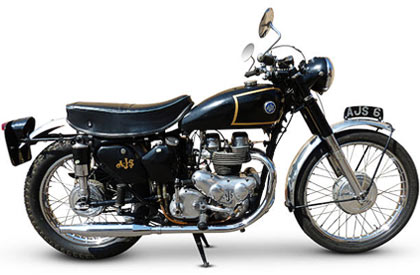




Today is Veteran's Day in the US, so I thought what better time to talk/write about military motorcycles. Then I thought the World Wars, Harley-Davidson, Indian, Norton and BSA were too obvious. These three bikes are in use in current 'hostile environments'.
Zero MMX
Designed and built by Zero Motorcycles in Scotts Valley, California. The blacked-out Zero MMX was developed for US Special Operations Forces, this super high-tech bike gives the rider stealth movement across rugged terrain in near silence and with minimal heat recognition. Built to military specs, including a specialized dash with toggle switches for all controls, keyless ignition, removable power packs, a total blackout mode and the bike can operate submerged in up to 3 feet of water.
Besides being silent, the electric motor delivers almost 100% of its torque on demand – 68 ft/lbs and 54 hp – and uses regenerative braking and rolloff to recover power. While developing the MMX, Zero made a number of innovative designs that are being used in their new civilian models, like the off-road MX and its street-legal version, the FX. Available at a store near you!
Hayes M1030
Okay, riding anything with a motor in the middle of East Bumfuck means at some point you gonna need to refuel. The friendly and resourceful folk at Hayes knew that at times the availability of gas would be limited, so armed with a siphon hose and breath mints they set to work on an engine that could run on almost anything. Anything. The M1030 runs on diesel, biodiesel, JP8 aviation fuel, and three more fuel types used by the military that I'm not allowed to tell you about.
Oh yeah, did I mention that on diesel, its primary fuel, it gets an amazing 96 mpg while cruising at 55 mph, giving it a range of over 400 miles.
Christini AWD 450
Oh yeah, did I mention that on diesel, its primary fuel, it gets an amazing 96 mpg while cruising at 55 mph, giving it a range of over 400 miles.
Christini AWD 450
Ridden by Navy SEALs and Army SF in Afghanistan, the AWD uses an innovative all-wheel drive system propelled by a 450 four-stroke motor. This gives the Christini some awesome off-road capabilities, able to pull fully armored troops loaded with gear over crappy terrain that would leave a normal dirt bike cryin' for momma. The bike also uses an automatic clutch, heavy-duty suspension, foam filled run-flat tires and GPS navigation.
Today in motorcycle history proudly supports the National Association for Bikers with a Disability (NABD). www.nabd.org.uk





















_-_The_Art_of_the_Motorcycle_-_Memphis.jpg/774px-1900_Thomas_(1)_-_The_Art_of_the_Motorcycle_-_Memphis.jpg)




